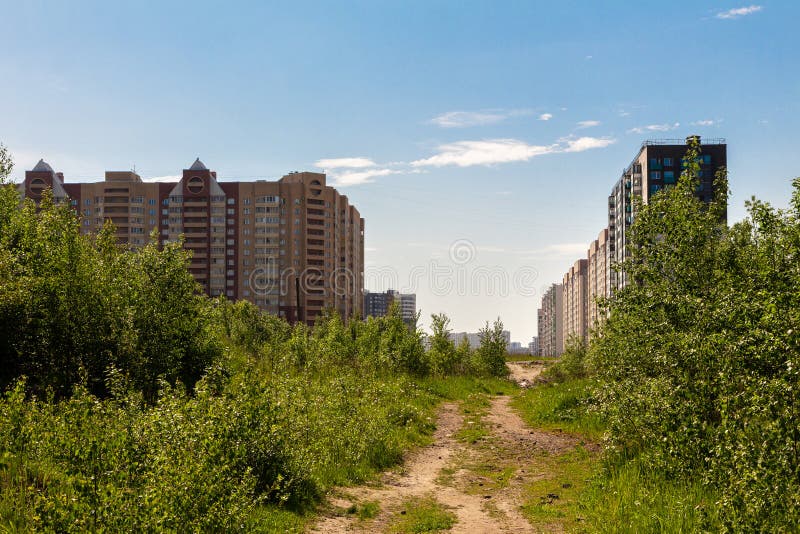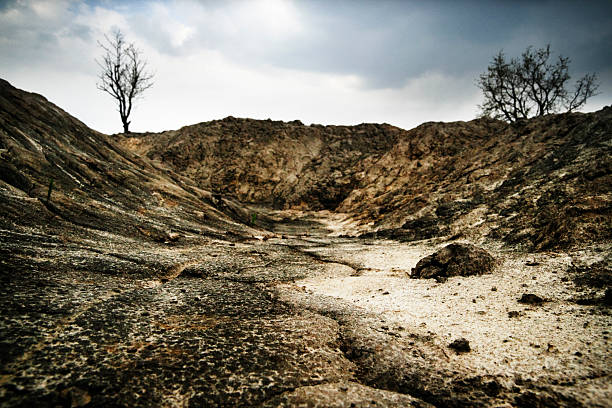Table of Content:
- Understanding Wastelands
- Causes of Wasteland Formation
- Challenges of Wasteland Reclamation
- Innovative Approaches to Wasteland Reclamation
- Success Stories in Wasteland Reclamation
Wastelands have long been synonymous with desolation, representing barren and unproductive landscapes often scarred by neglect, pollution, and human intervention. However, a paradigm shift is underway as societies around the world recognize the potential to reclaim these neglected spaces and transform them into flourishing ecosystems. This article explores the concept of wastelands, their underlying causes, and the innovative strategies employed to restore them, ushering in a new era of sustainability and ecological balance.

Understanding Wastelands
Wastelands encompass a wide range of environments, including abandoned industrial sites, degraded agricultural lands, deforested areas, and polluted water bodies. Their creation results from various factors, such as unplanned urbanization, improper waste management, mining activities, and climate change. These areas are not only aesthetically unappealing but also pose significant ecological, social, and economic challenges for communities.

Causes of Wasteland Formation
Urbanization:
Rapid urban growth often leads to the conversion of natural habitats into concrete jungles, leaving behind patches of land unfit for cultivation or any other productive use.
Industrialization:
Unregulated industrial activities generate toxic waste, contaminating the surrounding land and water bodies, rendering them unproductive.
Deforestation:
Rampant deforestation contributes to soil erosion, loss of biodiversity, and the transformation of lush forests into barren lands.
Mining and Quarrying:
The extraction of minerals from the earth can result in vast stretches of land becoming wastelands due to the depletion of natural resources.
Pollution:
Dumping of untreated industrial effluents and solid waste into water bodies and land degrades the soil and water quality, turning them into wastelands.
Challenges of Wasteland Reclamation
Reclaiming wastelands is a complex process that involves numerous challenges:
Financial Constraints:
Wasteland reclamation requires significant financial investments, making it difficult for cash-strapped communities to undertake such projects.
Technological Limitations:
Some wastelands are severely degraded, and reclaiming them demands advanced technologies and expertise.
Policy and Legal Hurdles:
Ambiguous land ownership, unclear regulations, and bureaucratic hurdles can hinder effective reclamation efforts.
Community Engagement:
Successful reclamation demands the active participation and cooperation of local communities to ensure the sustainability of the project.

Innovative Approaches to Wasteland Reclamation
Ecological Restoration:
One of the most effective methods involves recreating natural ecosystems by planting native vegetation, restoring water bodies, and encouraging wildlife habitat.
Permaculture and Agroforestry:
Integrating agricultural practices with tree planting helps rejuvenate degraded lands, improve soil fertility, and enhance biodiversity.
Phytoremediation:
Certain plants possess the ability to absorb and detoxify pollutants, making them valuable tools in cleaning contaminated wastelands.
Urban Greening:
Transforming vacant urban lots into green spaces or community gardens not only beautifies the area but also enhances the well-being of residents.
Industrial Site Rehabilitation:
Repurposing abandoned industrial sites for renewable energy installations or sustainable infrastructure can bring life back to these wastelands.
Success Stories in Wasteland Reclamation
Several inspiring examples from around the world showcase the potential of wasteland reclamation:
a) The "Loess Plateau" in China witnessed a remarkable transformation through sustainable land management practices, resulting in restored ecosystems and thriving communities.
b) The "Renaturation of the River Ruhr" project in Germany involved the revitalization of a heavily polluted river, transforming it into a thriving waterbody with improved biodiversity.
c) "The High Line" in New York City exemplifies the adaptive reuse of an old railway track into an elevated urban park, offering green spaces and recreational opportunities.
d) In India, the "Araku Valley Coffee" initiative not only rejuvenated degraded lands but also empowered tribal communities through sustainable coffee cultivation.

The journey from wasteland to renewed landscape is a testament to human ingenuity and determination. Embracing sustainable approaches, technological advancements, and community involvement, societies can revive these once desolate spaces, ushering in a future where wastelands no longer symbolize desolation but instead represent hope, rejuvenation, and ecological balance. As we continue to address environmental challenges, the reclamation of wastelands serves as a shining beacon of hope for a greener and more sustainable world.


You must be logged in to post a comment.